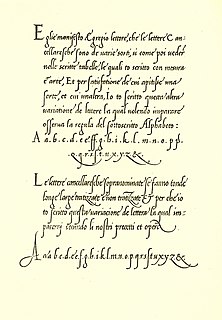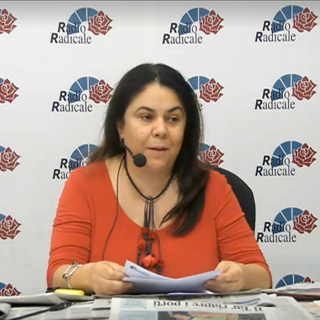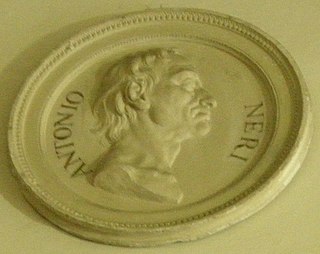 W
WMarguerite Gilbert Caetani, Princess of Bassiano, Duchess of Sermoneta, was an American-born publisher, journalist, art collector, and patron of the arts. She married an Italian aristocrat and became the founder and director of the literary journals Commerce (fr) and Botteghe Oscure.
 W
WBaldassare Castiglione, count of Casatico, was an Italian courtier, diplomat, soldier and a prominent Renaissance author, who is probably most famous for his authorship of Il Cortegiano or The Book of the Courtier. The work was an example of a courtesy book, dealing with questions of the etiquette and morality of the courtier, and was very influential in 16th-century European court circles.
 W
WOttavio Codogno (1570/74–1630) was deputy postmaster general of the Duchy of Milan and author of an extensive guidebook to the postal services, routes and timetables of early 17th-century Europe. His Nuovo itinerario delle Poste went through several reprints in both Milan and Venice.
 W
WAlvise Cornaro, often Italianised Luigi, was a Venetian nobleman and patron of arts, also remembered for his four books of Discorsi about the secrets to living long and well with measure and sobriety.
 W
WDanilo Dolci was an Italian social activist, sociologist, popular educator and poet. He is best known for his opposition to poverty, social exclusion and the Mafia on Sicily, and is considered to be one of the protagonists of the non-violence movement in Italy. He became known as the "Gandhi of Sicily".
 W
WGiulio Einaudi was an Italian book publisher. The eponymous company that he founded in 1933 became "a European wellspring of fine literature, intellectual thought and political theory" and was once considered the most prestigious publishing house in Italy. He was also the author of books on literature, history, philosophy, art and science.
 W
WMonica Esposito was one of the world's foremost scholars of Chinese religion specializing in the history, texts, and practices of Daoism.
 W
WAndrea Febbraio is an Italian entrepreneur, writer, professor, and investor. He is the founder of PromoDigital, a company he later sold for four times its revenues after two years of operation. Febbraio also co-founded Ebuzzing, a video adtech company he led from startup to $100 million in revenue after four years of operation.
 W
WGiovanni Antonio Tagliente was a calligrapher, author, printer and publisher based in Venice during the Renaissance period.
 W
WPeter Kolosimo, pseudonym of Pier Domenico Colosimo, was an Italian journalist and writer. He is ranked amongst the founders of pseudoarchaeology, a controversial topic where interpretations of the past are made that are not accepted the archaeological science community, which reject the accepted datagathering and analytical methods of the discipline. He also popularised ancient astronaut theories of contact between extraterrestrial beings and ancient human civilizations.
 W
WPietro Kuciukian is an Italian writer and surgeon of Armenian descent. He is also the president of International Committee for the Righteous of Armenians and Co-Founder of The Gardens of the Righteous Worldwide Committee. He collaborates with the Armenian Genocide Museum in Yerevan and is the founder of the “Memory is the Future” Committee, a project to sponsor Armenian cultural projects.
 W
WCesare Lombroso was an Italian criminologist, phrenologist, physician, and founder of the Italian School of Positivist Criminology. Lombroso rejected the established classical school, which held that crime was a characteristic trait of human nature. Instead, using concepts drawn from physiognomy, degeneration theory, psychiatry, and Social Darwinism, Lombroso's theory of anthropological criminology essentially stated that criminality was inherited, and that someone "born criminal" could be identified by physical (congenital) defects, which confirmed a criminal as savage or atavistic.
 W
WAnselmo Lorecchio was an Italian lawyer, journalist, politician, poet and writer of Albanian descent, founder of the La Nazione Albanese newspaper, and author of several literary works in praise of the independence of Albania.
 W
WMichela Murgia is an Italian novelist. She is a winner of the Premio Campiello and the Mondello International Literary Prize.
 W
WAntonio Neri was a Florentine priest who published L’Arte Vetraria or The Art of Glass in 1612. His father was a physician, and he was an herbalist, alchemist, and glassmaker. Neri traveled extensively in Italy and Holland.
 W
WIdanna Pucci is an Italian writer and documentary filmmaker, and a member of the prominent Pucci family of Florence.
 W
WFencing master Vincentio Saviolo, though Italian born and raised, authored one of the first books on fencing to be available in the English language.
 W
WFranca Sozzani was an Italian journalist and the editor-in-chief of Vogue Italia from 1988 until her death in 2016.
 W
WGiulia Turco, or Giulia Turco Lazzari, was a baroness best known as a naturalist and writer in her native Trento, Italy. She was married to the bolognese musician Raffaello Lazzari.
 W
WGiambattista Vico was an Italian political philosopher and rhetorician, historian and jurist of the Age of Enlightenment. He criticized the expansion and development of modern rationalism, was an apologist for Classical Antiquity, finding Cartesian analysis and other types of reductionism impractical to daily life, and was the first expositor of the fundamentals of social science and of semiotics.